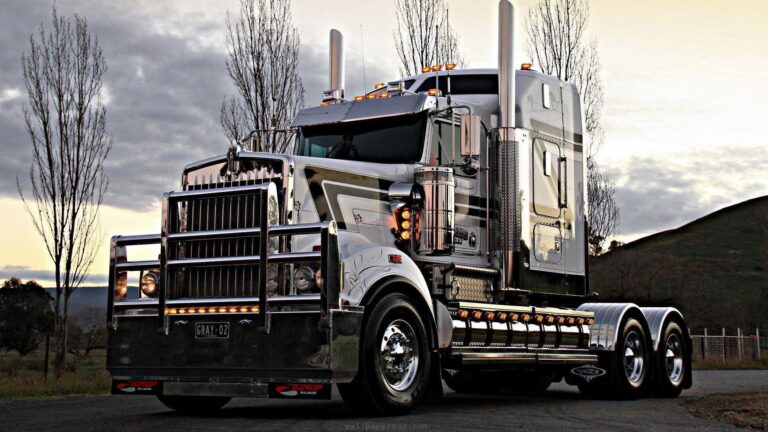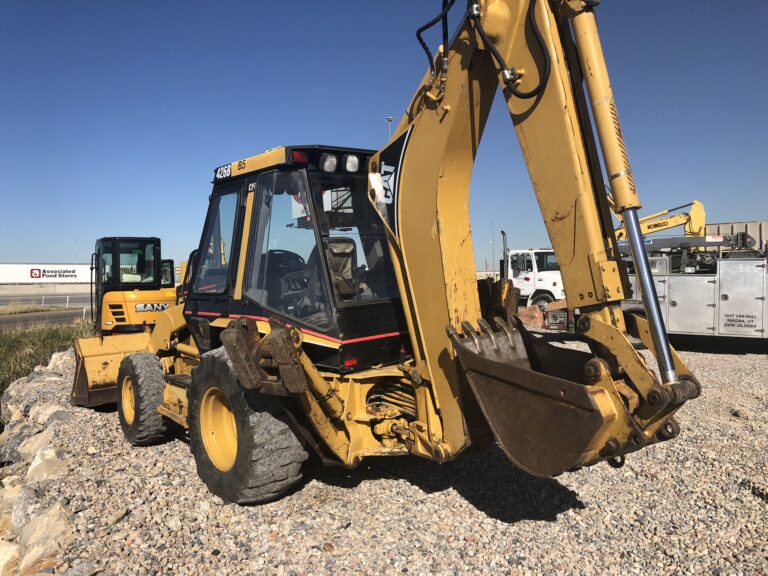How Long Is A 16 Foot Penske Truck Bumper To Bumper?
How Long Is A 16 Foot Penske Truck Bumper To Bumper? cars.truckstrend.com
Moving, whether across town or across states, often involves the critical decision of choosing the right rental truck. Among the popular options, the 16-foot Penske truck stands out as a versatile choice for individuals and families tackling a medium-sized move. However, a common misconception, and a crucial detail often overlooked, is the difference between the truck’s advertised cargo box length and its actual bumper-to-bumper measurement. Understanding the precise bumper-to-bumper length of a 16-foot Penske truck is not just a trivial fact; it’s a fundamental piece of information that can significantly impact your moving day logistics, safety, route planning, and overall peace of mind.
This comprehensive guide will delve deep into the specifics of a 16-foot Penske truck’s dimensions, focusing primarily on its bumper-to-bumper length. We’ll explore why this measurement is paramount, how it influences various aspects of your move, and provide practical advice to ensure a smooth, efficient, and stress-free experience. From navigating tight city streets to planning your parking at both ends of your journey, knowing the true size of your rental truck is the first step towards a successful relocation.
How Long Is A 16 Foot Penske Truck Bumper To Bumper?
Understanding the "16-Foot" Designation vs. Actual Length
When Penske, or any truck rental company, advertises a "16-foot truck," they are typically referring to the length of the cargo box or storage area. This measurement does not include the cab (where you sit), the engine compartment at the front, or any rear bumper extensions, liftgates, or other mechanisms at the back. This distinction is crucial because the additional components add several feet to the overall vehicle length.
For a 16-foot Penske truck, which is often a Ford E-series or similar chassis, the actual bumper-to-bumper length extends significantly beyond the 16-foot cargo box. While exact measurements can vary slightly by model year and specific configuration, a 16-foot Penske truck generally measures approximately 25 to 26 feet from bumper to bumper.
This extra length accounts for:
- The Cab: The driver’s cabin and engine bay, which extend forward from the cargo box.
- The Gap: A small space between the cab and the cargo box.
- The Rear Overhang: The portion of the truck that extends past the rear axle, often housing the rear bumper and, in many cases, a pull-out ramp or liftgate mechanism.

Knowing this actual length is the cornerstone of effective moving preparation. It’s the difference between confidently navigating a narrow street or driveway and finding yourself in a challenging, potentially damaging situation.
The Critical Importance of Knowing Total Length

The bumper-to-bumper length of your 16-foot Penske truck is far more than a mere statistic; it’s a critical dimension that impacts nearly every aspect of your moving experience. Overlooking this detail can lead to unexpected challenges, delays, and even safety hazards.
Maneuverability and Driving Challenges
Driving a vehicle that’s 25-26 feet long is vastly different from driving a standard passenger car.
- Turning Radius: Large trucks require significantly more space to turn. A 16-foot Penske truck will have a much wider turning radius than your car, meaning you’ll need to swing wider on turns and be mindful of curbs, parked cars, and other obstacles.
- Tight Spaces: Navigating residential streets, crowded city blocks, cul-de-sacs, and even some driveways can become a serious challenge. You need to ensure there’s enough room to make turns, pull in, and pull out without hitting anything.
- Backing Up: With a longer wheelbase and limited rear visibility, backing up a truck of this size requires extreme caution and often the assistance of a spotter. Knowing its full length helps you gauge distances more accurately.

Route Planning and Obstacle Avoidance
Your truck’s total length can dictate your viable routes.
- Low Bridges and Overpasses: While the height of the truck is the primary concern here, the overall length can influence your ability to maneuver into certain lanes or avoid obstacles that might be present near the approaches or exits of such structures.
- Ferry Crossings and Toll Booths: Some ferry services charge based on vehicle length, and certain toll plazas have restricted lanes for oversized vehicles. Knowing your exact length prevents surprises and ensures you choose the correct lanes.
- Residential Restrictions: Some older neighborhoods or private communities may have length restrictions for vehicles on their streets, especially overnight parking.
Parking and Storage Considerations
Finding suitable parking for a 25-26 foot vehicle can be a major headache.
- Driveway Space: Is your driveway long enough to accommodate the truck without blocking the sidewalk or street? Can you open the truck’s rear doors or ramp without obstruction?
- Street Parking: In many urban and suburban areas, finding a continuous 25-26 foot stretch of curb space can be nearly impossible, especially in front of your home or apartment. You may need to park further away and carry items, or secure permits for temporary no-parking zones.
- Loading Docks and Storage Units: Commercial loading docks are designed for trucks, but residential storage facilities might have tighter access roads or limited maneuvering space. Ensure your chosen storage unit facility can accommodate a truck of this size.
Legal and Safety Compliance
Adhering to regulations and ensuring safety are paramount.
- DOT Regulations: While typically not a concern for non-commercial renters, understanding truck dimensions is a fundamental aspect of commercial driving regulations.
- Bridge Weight Limits: Though more related to weight, larger trucks are often subject to specific bridge limits.
- Safe Following Distance: A longer vehicle requires a significantly longer braking distance. Knowing your truck’s length helps you maintain appropriate following distances on the road.
Key Dimensions of a 16-Foot Penske Truck (Beyond Bumper-to-Bumper)
While the bumper-to-bumper length is critical, a holistic understanding of all key dimensions will provide you with the most comprehensive picture for your move. These figures can vary slightly based on the exact model and year of the truck, but they provide a solid estimate.
-
Cargo Box Dimensions (Inside):
- Length: Approximately 16 feet (192 inches)
- Width: Approximately 7 feet 6 inches (90 inches)
- Height: Approximately 6 feet 6 inches (78 inches)
- This space is what you’re primarily paying for to transport your belongings.
-
Overall Height (Exterior):
- Approximately 10 feet to 10 feet 6 inches. This is crucial for navigating underpasses, low bridges, drive-thru lanes, and even some tree branches. Never assume you can fit under anything shorter than 12 feet without verifying.
-
Overall Width (Exterior, including mirrors):
- Approximately 8 feet to 8 feet 6 inches. This includes the side mirrors, which are vital for visibility but also add to the truck’s overall footprint, making narrow lanes or gates a tight squeeze.
-
Ground Clearance:
- Typically around 8-10 inches. This is important for uneven terrain, steep driveways, or getting over small obstacles without scraping the underside.
-
Payload Capacity:
- Approximately 3,500 to 4,000 lbs. This is the maximum weight of your cargo. Exceeding this can be dangerous and illegal.
-
Gross Vehicle Weight Rating (GVWR):
- Approximately 14,000 to 14,500 lbs. This is the maximum permissible total weight of the truck itself, plus its contents and passengers. This is generally within the limit for a standard Class C driver’s license in most states.
-
Fuel Tank Capacity:
- Around 30-40 gallons, typically running on gasoline. Fuel economy will be significantly lower than a car (e.g., 8-12 MPG).
Understanding these dimensions together helps you visualize the truck’s capabilities and limitations, ensuring you pack efficiently, drive safely, and avoid unexpected spatial challenges.
Practical Considerations and Tips for Renters
Armed with knowledge about your 16-foot Penske truck’s dimensions, you can take proactive steps to ensure a smooth move.
- Measure Your Space: Before picking up the truck, measure your driveway, the street in front of your house, and any tight turns leading to your property. Do the same for your destination. Will the 25-26 foot length fit comfortably? Is there enough room to open the rear door/ramp?
- Map Your Route: Use online mapping tools (like Google Maps with "truck mode" or by looking at satellite view) to identify potential obstacles. Look for low bridges, narrow roads, sharp turns, and areas with restricted parking. Plan alternative routes if necessary.
- Practice Driving (If Possible): If you’re new to driving a large vehicle, take a moment in an empty parking lot to get a feel for its size, turning radius, and braking. Practice backing up with a spotter.
- Utilize Your Mirrors: Truck mirrors provide a much wider field of view than car mirrors. Adjust them correctly and check them constantly, especially before changing lanes or turning. Remember the blind spots – a 16-foot truck will have significant blind spots, especially directly behind and along the lower sides.
- Allow Extra Space: Maintain significantly more following distance than you would in a car. Braking takes longer for a heavier, larger vehicle. When turning, swing wide but be mindful of hitting curbs or other vehicles.
- Secure Your Load: Properly pack and secure your belongings inside the truck. Uneven weight distribution or shifting items can affect the truck’s handling and stability, especially on turns or during braking.
- Fueling Up: Be aware that not all gas stations can accommodate a truck of this size due to canopy height or tight pump layouts. Plan your fuel stops at truck-friendly stations or those with ample space.
- Get a Spotter: Whenever possible, especially when backing up or maneuvering in tight spaces, have a friend or family member act as a spotter. Their guidance can prevent accidents.
- Walk the Path: At your origin and destination, walk the path the truck will take from the street to your loading area. Identify any trees, mailboxes, cars, or other obstacles.
Comparing the 16-Foot to Other Penske Sizes
Penske offers a range of truck sizes, and understanding how the 16-foot truck’s bumper-to-bumper length compares can help you confirm if it’s the right choice for your specific needs.
-
12-Foot Penske Truck:
- Cargo Box: 12 feet
- Bumper-to-Bumper: Approximately 20-22 feet.
- Ideal For: Studio or 1-bedroom apartments, smaller moves, or when navigating extremely tight spaces is a primary concern. Its shorter overall length makes it easier to handle than the 16-foot.
-
16-Foot Penske Truck:
- Cargo Box: 16 feet
- Bumper-to-Bumper: Approximately 25-26 feet.
- Ideal For: 1-2 bedroom homes or apartments, larger local moves, or small long-distance moves. Offers a good balance between cargo space and maneuverability for many residential situations.
-
22-Foot Penske Truck:
- Cargo Box: 22 feet
- Bumper-to-Bumper: Approximately 30-32 feet.
- Ideal For: 2-3 bedroom homes. The significant increase in length requires more advanced driving skills and careful route/parking planning.
-
26-Foot Penske Truck:
- Cargo Box: 26 feet
- Bumper-to-Bumper: Approximately 35-36 feet.
- Ideal For: 3-5 bedroom homes, large moves. This is the largest non-CDL rental truck. Driving a truck of this size is akin to driving a small bus and demands extreme caution and planning, especially regarding length-related challenges.
Choosing the right size isn’t just about cargo volume; it’s also about your comfort level driving a larger vehicle and the spatial constraints at your origin and destination. If you’re on the fence between two sizes, consider opting for the smaller one if maneuverability is a major concern, or the larger one if you’re confident in your driving abilities and have ample space.
Penske 16-Foot Truck Key Specifications Table
This table provides a summary of the typical dimensions and capacities for a 16-foot Penske rental truck. Please note that specifications can vary slightly by vehicle model and year.
| Dimension Type | Approximate Measurement | Notes |
|---|---|---|
| Bumper-to-Bumper Length | 25 – 26 feet (300-312 inches) | Total vehicle length, including cab and rear bumper/liftgate. |
| Cargo Box Length (Inside) | 16 feet (192 inches) | Usable storage space for your belongings. |
| Cargo Box Width (Inside) | 7 feet 6 inches (90 inches) | Interior width, consider furniture dimensions. |
| Cargo Box Height (Inside) | 6 feet 6 inches (78 inches) | Interior height, critical for tall items like refrigerators. |
| Overall Height (Exterior) | 10 – 10 feet 6 inches | Important for overhead clearances (bridges, garages, drive-thrus). |
| Overall Width (Exterior) | 8 – 8 feet 6 inches | Includes side mirrors; crucial for narrow lanes, gates, and parking. |
| Ground Clearance | 8 – 10 inches | For uneven terrain or steep ramps. |
| Payload Capacity | 3,500 – 4,000 lbs | Maximum weight of cargo you can safely transport. |
| Gross Vehicle Weight Rating | 14,000 – 14,500 lbs | Max total weight of truck + cargo + passengers (typically non-CDL). |
| Fuel Type | Gasoline | Check rental agreement for specific fuel type. |
| Fuel Tank Capacity | 30 – 40 gallons | Affects range between fill-ups. |
| Typical Mileage | 8 – 12 MPG | Varies significantly based on load, terrain, and driving style. |
| Average Home Size | 1-2 Bedrooms | General guideline for the amount of belongings it can hold. |
Frequently Asked Questions (FAQ)
Q1: Is the "16-foot" measurement the total length of the Penske truck?
A1: No, the "16-foot" refers to the length of the interior cargo box. The actual bumper-to-bumper length of a 16-foot Penske truck is significantly longer, typically around 25 to 26 feet, as it includes the cab and rear overhang.
Q2: How much space do I need to park a 16-foot Penske truck?
A2: You should ideally have at least 30 feet of clear, straight space to park it comfortably, allowing for maneuvering room at both ends. Remember to account for space needed to open the rear door/ramp.
Q3: Can I drive a 16-foot Penske truck with a regular driver’s license?
A3: Yes, in most U.S. states, a standard Class C driver’s license is sufficient for driving a 16-foot Penske truck. Its Gross Vehicle Weight Rating (GVWR) typically falls below the 26,001 lbs threshold that requires a Commercial Driver’s License (CDL).
Q4: What is the turning radius like for a 16-foot Penske truck?
A4: It has a much wider turning radius than a passenger car. You’ll need to swing wider on turns and be mindful of curbs and other vehicles. Always take turns slowly and check your mirrors.
Q5: Will a 16-foot Penske truck fit under a standard residential garage door?
A5: No, absolutely not. The overall height of a 16-foot Penske truck is typically 10 to 10.5 feet, far too tall for a standard residential garage door opening (which is usually around 7-8 feet high).
Q6: How does the liftgate/ramp affect the total length?
A6: When stowed, the liftgate or pull-out ramp is factored into the bumper-to-bumper length. When deployed, it extends beyond the truck’s standard length, requiring even more space behind the vehicle for loading and unloading.
Q7: How much fuel does a 16-foot Penske truck hold, and what’s the typical mileage?
A7: A 16-foot Penske truck typically has a 30-40 gallon fuel tank and gets an average of 8-12 miles per gallon, depending on load, terrain, and driving habits. Plan your fuel stops accordingly.
Conclusion
Understanding "How Long Is A 16 Foot Penske Truck Bumper To Bumper" is far more than an academic exercise; it’s a critical component of successful moving logistics. While the "16-foot" designation refers to the cargo box, the actual bumper-to-bumper length of approximately 25 to 26 feet is the true dimension you need to plan around.
This comprehensive understanding empowers you to make informed decisions regarding route selection, parking strategy, and safe driving practices. By knowing the truck’s full footprint, you can avoid costly mistakes, minimize stress, and ensure that your moving day proceeds as smoothly as possible. Remember to measure your spaces, plan your route carefully, and drive with an awareness of the truck’s extended dimensions. With proper preparation, your 16-foot Penske truck can be an incredibly efficient tool for conquering your next move.





